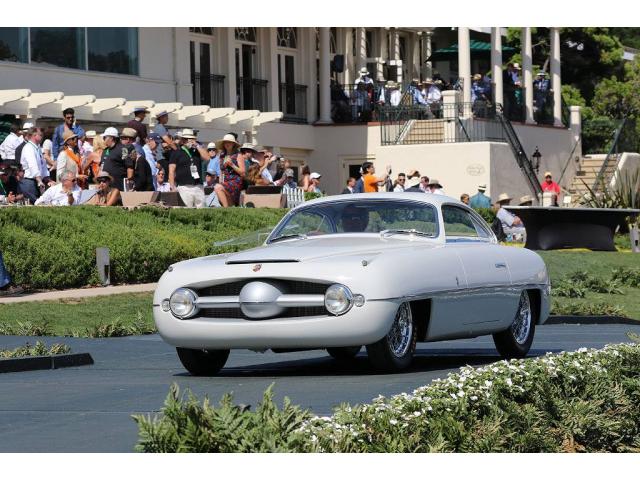1953 Abarth 1100 Sport Ghia Coupe
- Brand: Abarth
Austrian born tuning expert Carlo Abarth was one of an all-star team that was involved in Piero Dusio's ambitious Cisitalia project immediately after the War. By 1949, Cisitalia's financial position quickly worsened and Abarth decided to jump the sinking ship. As compensation for his efforts, Dusio gave him several examples of the latest '204' model in various states of completion. They were modified to the extent that a rebadging to Cisitalia-Abarth 204A was warranted. These cycle-fendered sports cars were raced with considerable success by the 'Squadra Carlo Abarth' in 1949.
Encouraged by the good results on the track and funded by the ever increasing sales of his exhaust systems, Carlo Abarth established Abarth & C. to manufacture complete cars. The first of these made a victorious debut early in March of 1950 when Guido Scagliarini won the 1100 class in the Coppa InterEuropa at Monza. Fitted with a new coupe body, it was confusingly referred to as an Abarth 204A. Today it seems more likely that the car was actually the first of three Abarth 205s built around a brand new platform chassis. The 204s used a distinctly different tubular frame.
Both cars do share the Fiat sourced four cylinder engine. Fitted with Abarth's tuning kit, which consisted of a revised intake manifold, two Weber carburettors and a bespoke exhaust, the tiny 1089cc engine produced an impressive 83 bhp. The four-speed gearbox was also sourced from Fiat. The potent drivetrain was fitted in a very straightforward box-section steel platform chassis. Alfredo Vignale was commissioned to build the lightweight aluminium body. The beautiful design came from the pen of Giovanni Michelotti. Included, of course, were the three portholes on the front fenders that were typical for Vignale's bodies.
After its spectacular Monza debut, the 204A / 205 Coupe was shown during the 1950 Turin Motor Show. It was the first time Abarth displayed his cars at this most important show. A second example was finished shortly after and both were raced in the major Italian events that season. The third example was completed early in 1951 and was more luxuriously appointed as the two racing cars. Fitted with a slightly larger version of the four cylinder engine, it was shown during the Turin shown in 1951. Prized at the level of a two-litre Ferrari, Abarth struggled to find customers for his small Coupes and in the end only three were built.
The huge expenses of the racing efforts weighed heavily on the fledgling company and Abarth decided it was wise to cease racing and focus on developing the successful exhaust systems for the foreseeable future. In addition to the three competition cars, Abarth also produced a fourth much along the same lines, which would be used for a Ghia-bodied show car that debuted at Turin in 1953. The platform chassis first used on the 205 would serve on as the basis for several addtitional show cars and eventually the Abarth 207 racing car introduced in 1955.
Amazingly all three Abarth 205s, as well as the 110 Sport show car have survived and are in the hands of caring owners. They remain as the first in a long line of Abarth racing cars that made their mark on small-displacement racing for several decades.
| Specification | |
| Production Start | 1953 |
| Country of origin | Italy |



















